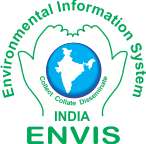Issues: 1 2 3 4 5 6 7 8 9 10 11 12 13 14 15 16 17 18 19 20 21 22 23 24 25 26 27 28 29 30 31 32 33 34 35 36 37 38 39 40 41 42 43 44 45 46 47 48 49 50 51 52 53 54 55 56 57 58 59 60 61 62 63 64 65 66 67 68
BharathSetturu1, Vinay S1Ramachandra, T V* 1. Abstract Land use and land cover (LULC) of a landscape expresses the structure and functionality of the landscape and its capacity to support a variety of species and ecosystem services. The large and continuous forest cover provides a critical habitat for diverse floral species as well as wildlife. The land transformation, rapid expansion of linear developments such as roads, power lines have irreversible loss of habitat, result in forest fragmentation by impacting local ecological processes. The Kodagu (Coorg) district is blessed with thick evergreen rain forests and also acting as a prime economic center for Karnataka. Kodagu forests are lifeline for Karnataka, Tamilnadu, Kerala states. However, imbalances due to the large scale LULC changes have caused alterations in the structure of the landscape affecting the water security and landscape stability which will threaten the livelihood of people. The spatio temporal land use analysis of the region highlights the loss of forest cover due to uncontrolled expansion of coffee plantations and other driving forces. The major cover of evergreen forest (40.47 to 27.14%) has lost due to interventions in terms of road, built-up areas and other changes. Around 66,892 ha of pristine forest cover was lost due to un-interrupted exploitation. The Fuzzy-AHP-CA. Forecasting future land use change suggests that the greatest loss of forest (5 % from 2018 to 2026) at the expansion of non-forest land uses.Ecological fragile zones are the ecological units with the exceptional biotic and abiotic elements where mismanagement of these zones will result in imbalance in the ecosystem. Identification of ecological fragile zones has been done by considering both ecological and social dimensions spatially. The ecological fragile zone map at the village wise, elucidates ecological significance at village level that depicts 117 villages under high ecological fragile, 143 under moderate, 35 under medium-1 and 5 villages are under medium-2 ecological fragile status. The unplanned developmental activities for short-term gains would spell doom on Cauvery water sustenance as 95% the regions fall under high ecological fragile zones. NEXT
|

